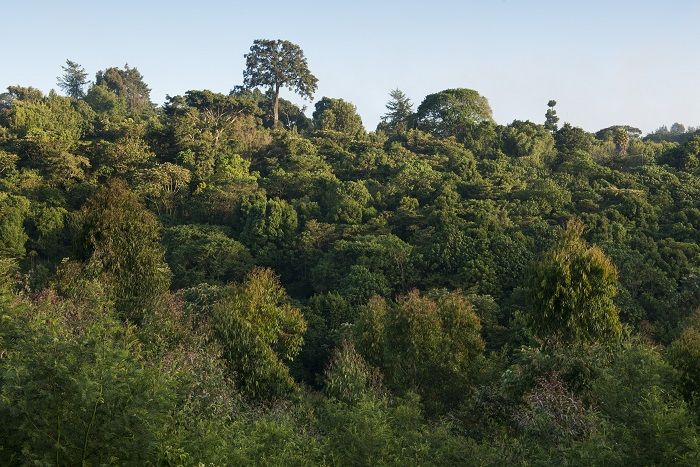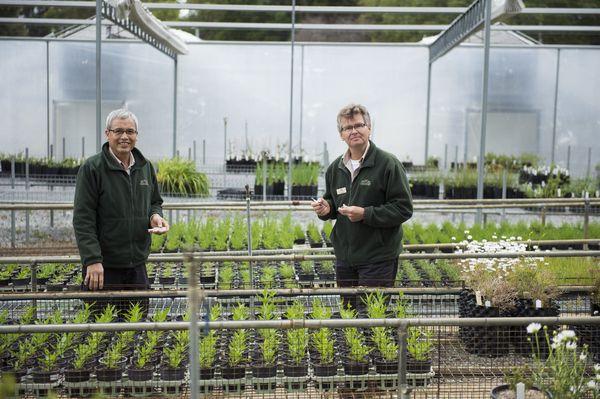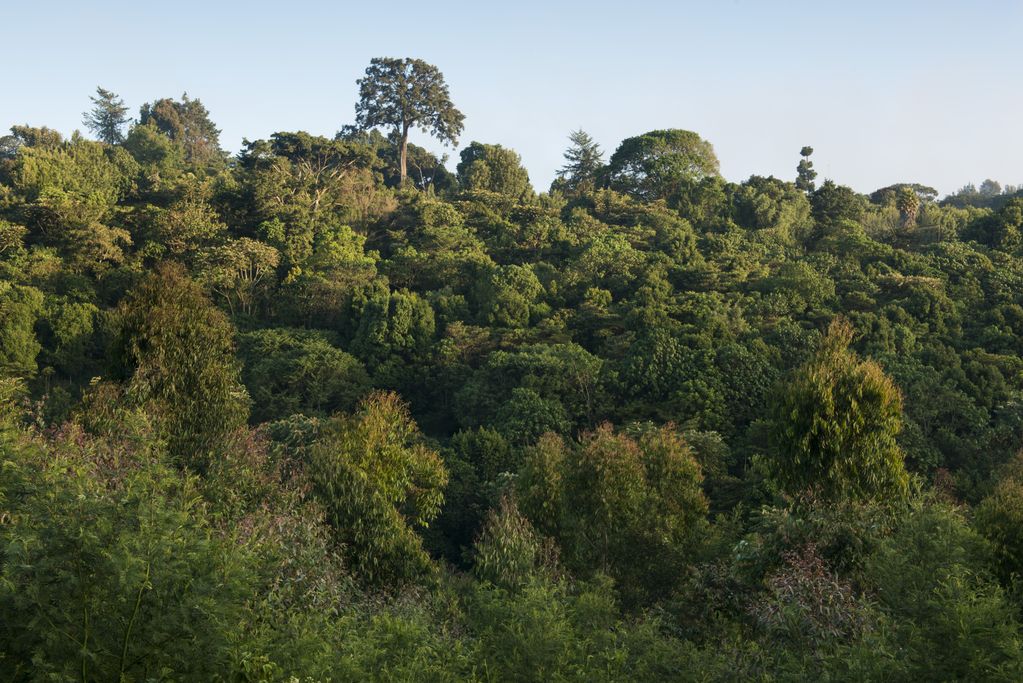A Model for East Africa Habitat Restoration Initiatives

-
Status of project
Ongoing -
Region
Africa -
Country
Kenya -
Programme
Ecological Restoration Alliance of Botanic Gardens -
Workstream
Saving Plants -
Topic
Ecological Restoration
Brackenhurst Botanic Garden’s restoration of upland forest near Nairobi has become a model for East African habitat restoration initiatives.
The forest in the region was once so extensive that it hosted leopard, buffalo and elephant, and blocked Nairobi residents’ view of Mount Kilimanjaro. Less than 2% of original forest remains with most transformed into tea and Eucalyptus plantations.
A framework species restoration approach was applied at the site. Species were identified with:
- High survival rates when planted in deforested sites
- Rapid growth rates
- Dense, spreading crowns that shade out herbaceous weeds
- Produce flowers and fruits quickly that attract seed-dispersing wildlife
Growth rates, survival rates, seedling health, presence of weeds, impact of browsing, insect damage and disease are monitored for a sample of trees in the restoration sites.
The majority of restoration site requires intensive management, particularly removal of invasive species. The amount of invasive weeding required depends on the site coverage since original native forest was cleared. For example, parts of the site that were previously covered with Eucalyptus require much longer and labour-intensive weeding than parts of the site that were previously under grass cover.
The restoration sites provide an excellent opportunity for training, education and engagement of partners in Kenya and East Africa. Several training courses have been hosted on forest restoration and seed collection, training over 80 people.
Key results include:
- 40 hectares of afromontane forest have been restored
- Over 170 species of birds and 120 species of butterfly are now present
- Supplying indigenous trees to tree planting organisations
- Livelihood opportunities in an area of high unemployment, by training and employing local people
For more information on this project, please contact: Mark Nicholson

